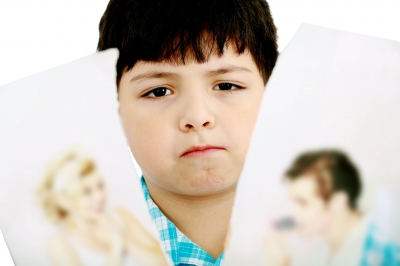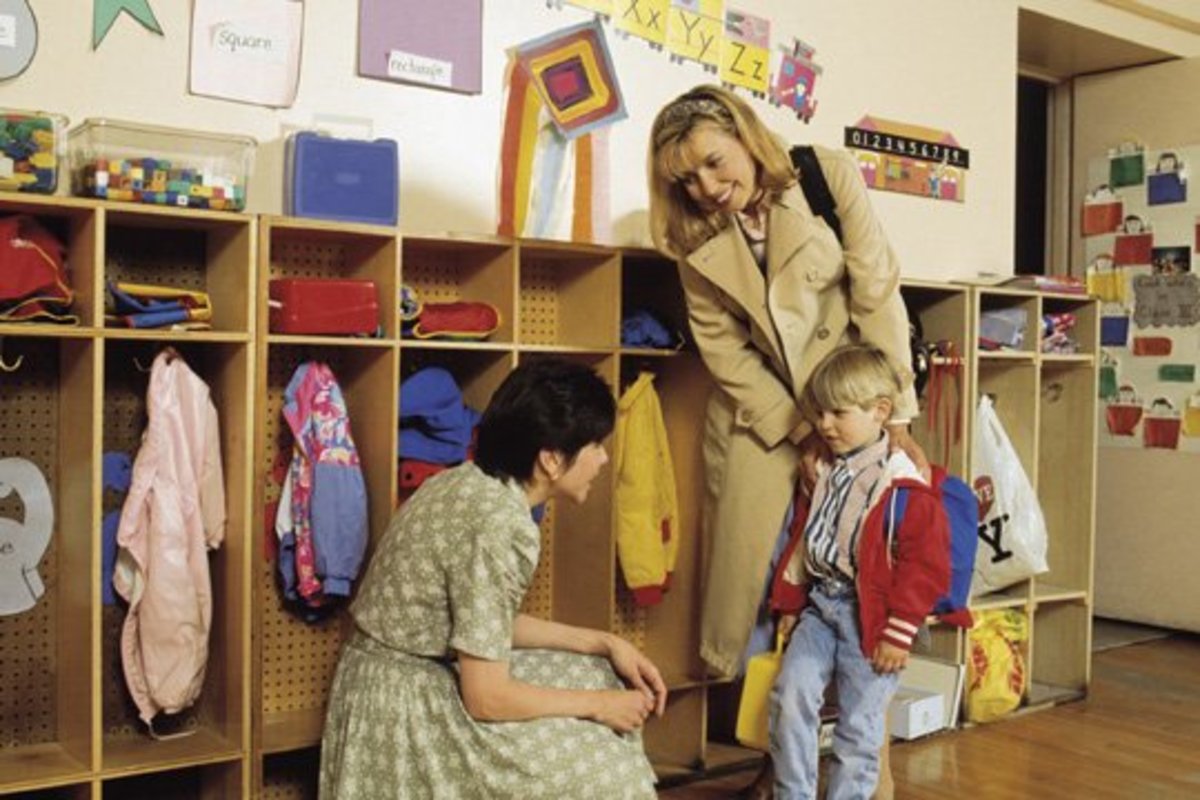- HubPages»
- Health»
- Mental Health»
- Anxiety Disorders
What is Separation Anxiety Disorder?

Wikipedia Definition
Separation anxiety disorder (SAD) is a psychological condition in which an individual experiences excessive anxiety regarding separation from home or from people to whom the individual has a strong emotional attachment (e.g. a parent, grandparents, or siblings).
According to the American Psychology Association, separation anxiety disorder is the inappropriate and excessive display of fear and distress when faced with situations of separation from the home or from a specific attachment figure. The anxiety that is expressed is categorized as being atypical of the expected developmental level and age. The severity of the symptoms ranges from anticipatory uneasiness to full-blown anxiety about separation.[2]
SAD may cause significant negative effects within a child's everyday life, as well. These effects can be seen in areas of social and emotional functioning, family life, physical health, and within the academic context.The duration of this problem must persist for at least four weeks and must present itself before a child is 18 years of age to be diagnosed as SAD, as specified by the DSM-IV.[3]

What causes Separation Anxiety Disorder?
Many things can cause a child to suffer from Separation Anxiety Disorder. Among them are:
- It could be hereditary. There is evidence that suggests a genetic link between separation anxiety in children and parents of those children who have a history of anxiety, depression or panic disorders.
- Developmental Differences. This happens when children develop at different rates then other children their age. An example of this would be a child who is much taller and more developed then his/her peers so they appear to be older but is in fact behind either socially or emotionally. The expectations of this child may not be equal to what they can handle and so it causes distress, making separation more difficult.
- Environmental change that often triggers a change in the child's life and routine. Some examples of environmental change would be moving, death or illness of a family member or friend, starting a new school or returning to school after having the whole summer off, a traumatic event.
- Cognitive factors. When children repeatedly worry about what they are afraid of (the dark, getting lost, either themselves or someone close to them getting hurt). A child who is unable to think about anything but his fears will become more anxious which in turn creates irrational behaviors.
- Behavioral Issues. Clingy behaviors and constant need for attention may be the result of a child's inability to handle feelings of anxiety associated with certain situations or environments. The child's troublesome behavior may become the way they express this anxiety. This behavior can also be misconstrued as manipulation at times, especially when the symptoms dissapear quickly once the fear of separation passes.
- Stress. Symptoms of separation anxiety disorder may be heightened by a change in many different things such as a change in family structure, including death, divorce, birth of a sister or brother, etc. The symptoms might also arrise from something as simple as a change in parents' response to discipline or daily routine.
- The significance of attachment between a parent and child. If the child senses emotional distance, such as the parent being preoccupied with something other than their child, the child's misbehavior may be an attempt to draw the parent in more closely. The problematic behaviors can also draw the attention of others as well. Your child may develop a need for attention at all times or will have anxiety if it is not there, even for shortened periods of time.
A child may be excessively worried about being alone

Symptoms of Separation Anxiety Disorder
The list of symptoms provided below was constructed with the help of The Diagnostic and Statistical Manual of Mental Disorders (DSM-IV-TR) , a handbook for mental health professionals that aids in diagnosis.
- Constant excessive worrying. The child may worry all the time about being lost or separated from their family. The worry may also include the fear that something will happen to the child or their family.
- Repeated extreme distress when separated. When this happens the child may start to worry about the separation way before it actually happens. Sometimes hours before in anticipation of the separation. It also should be noted that the child's emotional response will intensify if you try to reason or intervene the behavioral pattern. You will experience the child in an extremely distressed state with a highly charged emotional response when separated from the caregiver.
- Physical symptoms. Children will fake illness to avoid separation or they may actually experience nausea upon separation or hours before the onset of the separation. An example of this would be that your child played fine all day long and a couple hours before bedtime starts complaining of a stomach ache as bedtime approaches. This child may actually become sick at the thought and worry of being alone in their bedroom in the dark away from their caregiver.
- Refusal to parcipate in activities. The child may refuse to go to school because they fear being separated from their parent. The child may not be able to go to sleep without their parent being in the room with them. They also may not be able to stay at home alone without an adult present. The disorder disrupts daily routines and performance of age-appropriate skills. The child tends to revert to behaviors from a younger age. The child's intense emotions results in tantrums or clingy behavior.
- Unusual interest in a parents' schedule. The child wants to know all the details of the parents' routine. This behavior will minimize the anxiety the child is feeling.
- Nightmares. A child may experience repeated nightmares that include visions of being separated from their family. Some of these dreams may be normal, however it may be a sign of the disorder if the child's nightmares show signs of being preoccupied with danger and becoming lost.

Treatment: Pills vs Therapy
Treatments that give a child a feeling of safety and security work best. There are different kinds of therapy options:
Cognitive-behavioral Therapy: This therapy works on a person's thoughts and images in order to change their behavior. This can be achieved by working with the child to label their fears and identify their irrational thoughts. This is successful if the child can then confront and correct their false beliefs therefore easing their anxiety.
Imagery: This therapy works by creating a positive mental picture for the child. The child practices being successful in a stressful situation. The positive mental picture will lessen the anxiety for the child.
Modeling: Parents and/or teachers can help model appropriate behavior in stressful situations. An example of this would be a relaxed and calm self when dropping off your child at school.
Systematic Desensitization: This is a behavior modification technique where a person is exposed to a stressful situation while learning to be relaxed.
There are many other therapy treatments such as positive role models, behavior modification, reminders, and distraction and altruism. You may need to try a couple different therapy options before finding one that works for your child. The right therapist is also very important to the success of treating this disorder.
Finally, if all else fails there is medication management.
Medication is helpful in certain cases where anxiety is so severe that the child is unable to go about their daily routine. Medication management most often involves some type of anti-anxiety or anti-depressive drug. Please make sure that a trained health professional examines the child before any decisions are made as far as medication is concerned.

An Example - My Child
As I was researching and writing this article I realized it spoke to one of my children. I had been questioning troublesome behavior for the last couple of years. It is hard to know if your child is just experiencing normal age-appropriate reactions or overreactions to life circumstances or if it is something more. It would make sense that my child does in fact have separation anxiety disorder due to the causes listed above in this article. Within the last three years he has experienced divorce, loss of a grandmother, two seperate households, new schools and has moved twice. What child would not experience anxiety when life as they know it has changed and continues to change more so then the average family household. I use to think that my child was manipulative and sometimes I am sure at times he really is being just that - manipulative. However, this research has made me question if he is being manipulative all the time or is some of this behavior anxiety based. He also doesn't do well at bed time, in the dark, or in complete quiet. Sometimes he becomes so agitated that he does infact vomit before bedtime because of a stomach ache from worrying. He resorts to child like behavior much younger then his age and shows signs of resistance to growing up. He also questions my schedule and wants to know where I am going and why I am going somewhere. I have to admit I thought this was behavior he was learning from his father, but perhaps he needs to know my schedule to ease his anxiety. He is in counseling and has been since the divorce but perhaps now through the help of his therapist we can explore this disorder and see if we can help him with some of the anxiety by applying some of the therapy treatments touched on in this article.
Please comment below if you have a child that has been diagnosed and treated for Separation Anxiety Disorder. I know that the feedback would help me as well as others.








